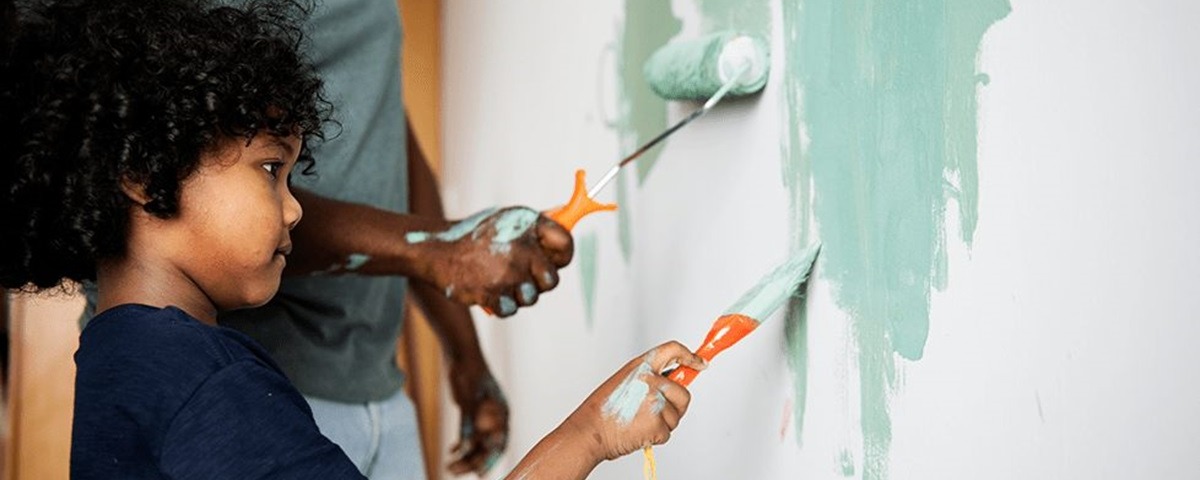
Whether you’re buying a new build home or an older property, having basic DIY skills will save you time and money. From putting up a shelf to replacing broken tiles, here’s what you need to know as a new homeowner.
Basic DIY tools you need
Whether you’re a DIY expert or a beginner, you’ll need the following basic tools for DIY projects:
• Tape measure
• Pliers and screwdrivers
• Hammer
• Cordless drill
• Basic saw
• Palm sander
• Safety equipment (goggles, gloves and dust masks)
DIY skills for new build homes
Even though new builds are move-in ready, these basic DIY skills will help you personalise your new home:
• Painting and decorating: Refresh walls or add your personal style with paint or wallpaper.
• Hanging shelves and pictures: Safely use a drill to hang shelves, pictures and fixtures.
• Basic plumbing: Handle minor leaks and unclog drains.
• Electrical work: Change lightbulbs and install light fixtures.
• Furniture assembly: Put together flat-pack furniture efficiently.
To give you that extra security, our Barratt new build homes are protected by an NHBC Buildmark Warranty, which includes 2 years of a builder warranty followed by 8 years of insurance coverage.
DIY skills for older homes
Older properties often require more DIY knowledge. Here are some complex DIY tasks that you may need to carry out in an older home:
• Interior/exterior painting: Refresh faded or peeling paint to protect surfaces.
• Basic electrics: Update outlets and switches.
• Drainage management: Prevent foundation issues and water damage with proper drainage solutions.
• Window and door repairs: Fix drafty or damaged windows and doors to improve energy efficiency.
• Plumbing maintenance: Address leaks promptly and know when pipe replacement is necessary.
Basic DIY jobs you can do yourself
Below, we explore how to tackle easy DIY tasks and cover the basic DIY tools you’ll need.
How to put up a shelf
First, gather the following equipment:
• Shelving brackets and screws
• A spirit level
• A detector
• A drill (the type of drill you’ll need will depend on your wall)
• A screwdriver
Then, follow these steps:
1. Mark the shelf’s position with a pencil, using a spirit level to ensure your markings are level.
2. Check for wires and pipes with a detector before drilling.
3. Secure brackets to the wall with appropriate screws and wall plugs.
4. Attach the shelf to the brackets and tighten the screws.
How to replace a broken tile
To replace a broken tile, you’ll need:
• A new tile that matches your existing tiles
• A putty knife
• A sharp knife
• A cloth
• Tile adhesive and grout
Then follow these steps:
1. Remove the grout around the damaged tile with a sharp knife.
2. Carefully pry out the broken tile with a putty knife.
3. Clean the surface, apply new adhesive and set the replacement tile.
4. Apply fresh grout around the new tile and wipe it clean with a damp cloth.
Safety tips and best practices
Always turn off the power at the circuit breaker before working on electrical projects, and wear appropriate protective gear like safety glasses, gloves and dust masks for different tasks. If you aren’t confident about carrying out a project safely, particularly those involving plumbing, gas or major electrical work, don’t hesitate to call a professional.
Explore our brand-new homes across the UK with fantastic offers to help you move. Whether you’re a first-time buyer or looking to move up the property ladder, we have the right option for you.
Call or visit our Sales Advisers today to start your homebuying journey.


